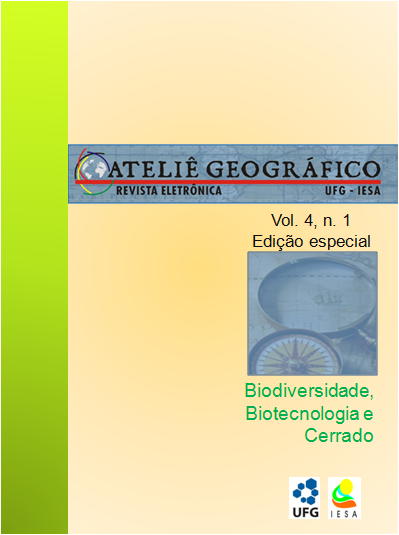INDIGENOUS LANDS, COMMON PROPERTY AND BIODIVERSITY MANAGEMENT: A Brasil – French Guiana comparison
DOI:
https://doi.org/10.5216/ag.v4i1.16687Abstract
At the end of the last century, the status of indigenous peoples changed in social representations and political scenes, shifting from isolated communities set apart from development processes to local partners for biodiversity management and environmental conservation. This is the result, amongst other factors, of two processes: the growing legal recognition of these peoples and the evolution of environmental policies re-shaped by sustainable development. In spite of that, a large number of policies derived from the paradigm of “virgin nature” are still in use, feeding old and new socio-environmental conflicts. What are the actual territorial rights conferred to indigenous peoples in Brazil and French Guiana? To what extent, and how, is their own territoriality recognized? And more specifically, to what extent traditional indigenous concepts of space and natural resources appropriation can help creating efficient policies for sustainable management of biodiversity?
Downloads
Downloads
Published
How to Cite
Issue
Section
License
Autores que publicam nesta revista concordam com os seguintes termos:- Autores mantém os direitos autorais e concedem à revista o direito de primeira publicação, com o trabalho simultaneamente licenciado sob a Licença Creative Commons Attribution que permite o compartilhamento do trabalho com reconhecimento da autoria e publicação inicial nesta revista.
- Os autores não serão remunerados pela publicação de trabalhos na Revista Ateliê Geográfico. Além disso, os conteúdos publicados são de inteira e exclusiva responsabilidade de seus autores, ainda que reservado aos editores o direito de proceder a ajustes textuais e de adequação às normas da publicação.
- Autores têm permissão e são estimulados a divulgar seu trabalho online (ex.: em repositórios institucionais ou na sua página pessoal), já que isso pode gerar alterações produtivas, bem como aumentar o impacto e a citação do trabalho publicado (Veja O Efeito do Acesso Livre).


